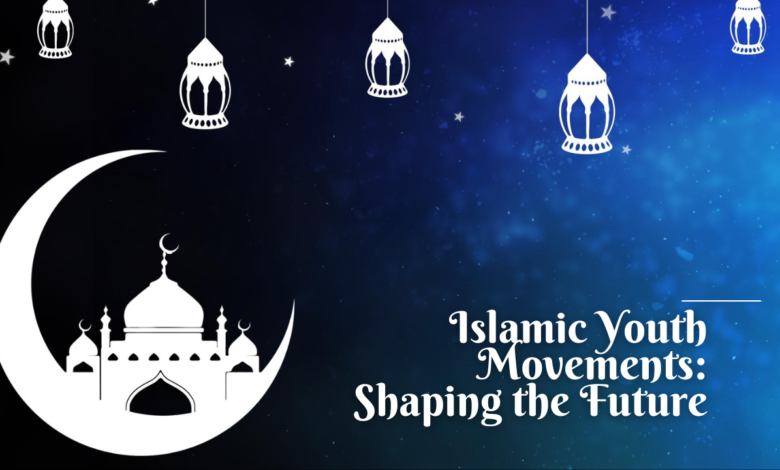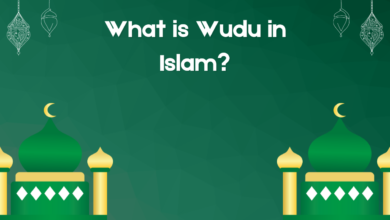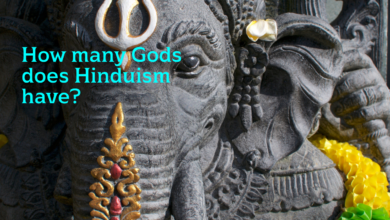Islamic Youth Movements: Shaping the Future
Empowering the Future: The Influence and Challenges of Islamic Youth Movements

Islamic Youth Movements: Shaping the Future
Islamic youth movements are organized groups of young Muslims who aim to promote Islam as a comprehensive way of life while addressing various social, political, and religious challenges in the modern world.

Introduction
In recent years, Islamic youth movements have emerged as powerful and dynamic forces in the Muslim world, influencing societies, politics, and the global narrative on Islam. These movements, driven by young and passionate individuals, have been instrumental in shaping the future of the Muslim world and challenging existing stereotypes and misconceptions. This article explores the significance of Islamic youth movements, their goals, and their impact on society, politics, and religious discourse.
The Rise of Islamic Youth Movements
Islamic youth movements represent a diverse array of groups and organizations that share a common desire to promote Islam as a holistic way of life and address the challenges faced by Muslims in the modern world. These movements have gained momentum in response to a range of issues, including political oppression, social injustice, economic inequality, and religious extremism. They often seek to engage young Muslims in constructive and transformative activities, empowering them to be active participants in their communities.
One of the defining characteristics of Islamic youth movements is their adaptability and use of modern tools and technologies. They harness the power of social media and the internet to mobilize supporters, share their message, and connect with like-minded individuals across the globe. This has allowed them to transcend geographical boundaries and become influential on an international scale.
Also check.
- Who is the Wessiah in Islam?
- What is Wudu in Islam?
- What is Jihad in Islam?
- Why did Islam Spread So Quickly?
- Who is the Holy Spirit in Islam?
Goals and Objectives
Islamic youth movements share several common goals and objectives:
- Social Justice: Many of these movements are driven by a commitment to addressing social injustices, such as poverty, corruption, and discrimination, within their communities. They advocate for equal opportunities and the protection of human rights.
- Political Reform: In regions where authoritarian regimes prevail, Islamic youth movements often call for political reform and greater political participation. They seek to create more inclusive and accountable political systems.
- Interfaith Dialogue: Some movements prioritize interfaith dialogue and cooperation as a means to promote peace, understanding, and tolerance between different religious communities. They aim to counter stereotypes and misconceptions about Islam.
- Counter Extremism: Many Islamic youth movements actively work to counter religious extremism by promoting a moderate and balanced interpretation of Islam. They offer an alternative narrative to extremist ideologies.
- Empowerment: Empowering young Muslims is a fundamental goal. They encourage education, leadership development, and self-improvement to enable youth to contribute positively to their societies.
Impact on Society
Islamic youth movements have had a significant impact on the societies in which they operate:
- Political Influence: In some cases, these movements have played pivotal roles in political change, contributing to the Arab Spring uprisings and other movements for political reform.
- Social Change: They have been instrumental in pushing for social change, including women’s rights, anti-corruption measures, and greater civil liberties.
- Religious Discourse: Islamic youth movements have enriched religious discourse by advocating for a more open and tolerant interpretation of Islam. They challenge extremist ideologies and promote a moderate, inclusive Islam.
- Global Solidarity: By connecting with youth across borders, these movements have fostered a sense of global solidarity among Muslims, leading to greater cooperation and shared goals.
Challenges and Controversies
Despite their positive contributions, Islamic youth movements also face challenges and controversies. They can be divisive, with differing visions and strategies leading to internal conflicts. Some governments view them with suspicion, fearing they may threaten the status quo. Additionally, critics argue that some of these movements can inadvertently contribute to radicalization by providing a platform for extremist ideologies.
Conclusion
Islamic youth movements are a force to be reckoned with in the contemporary Muslim world. They are driven by a sense of purpose, a desire for justice, and a commitment to shaping a more equitable and harmonious future. While they face challenges and controversies, their potential for positive change and their capacity to influence society, politics, and religious discourse cannot be ignored. As they continue to evolve and adapt to the changing landscape, their impact on the Muslim world and the global stage is likely to grow, making them key players in shaping the future.

FAQs
What are Islamic youth movements?
Islamic youth movements are organized groups of young Muslims who aim to promote Islam as a comprehensive way of life while addressing various social, political, and religious challenges in the modern world.
What are the key objectives of these movements?
Common objectives include advocating for social justice, pushing for political reform, engaging in interfaith dialogue, countering extremism, and empowering young Muslims to become active and positive contributors to society.
How do Islamic youth movements operate?
Islamic youth movements often use modern tools and technologies, such as social media and the internet, to mobilize supporters, spread their message, and connect with like-minded individuals globally.
What impact have these movements had on society?
Islamic youth movements have influenced political change, promoted social reforms, enriched religious discourse, and fostered global solidarity among Muslims.
What challenges do Islamic youth movements face?
Challenges include internal conflicts due to differing visions and strategies, suspicion from some governments, and concerns about unintentional contributions to radicalization.
Do all Islamic youth movements have the same goals and ideologies?
No, these movements vary widely in their goals and ideologies. While some focus on political reform and social justice, others prioritize religious activism and counter-extremism efforts.
Are Islamic youth movements limited to specific regions or countries?
No, they are not limited by geographical boundaries. Many of these movements have a global presence and influence, transcending national borders.
How do Islamic youth movements contribute to interfaith dialogue?
Some Islamic youth movements actively engage in interfaith dialogue to promote peace, understanding, and tolerance between different religious communities. They aim to counter stereotypes and misconceptions about Islam.




